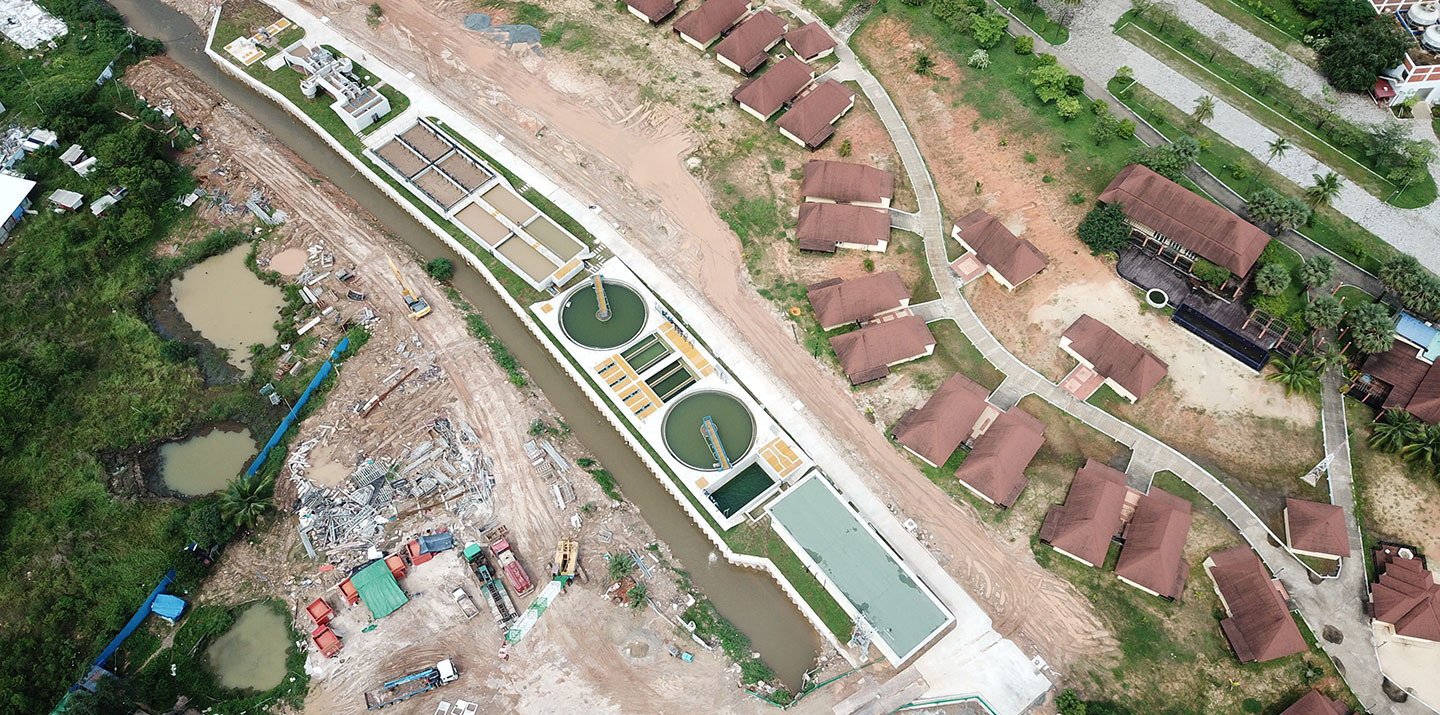
Adding shortcut nitrogen removal technology to MABR wastewater treatment lets Fluence’s Nitro deal efficiently with wastewater that has very high nitrogen loads.
This streamlined process, used in Fluence’s Nitro plants, lets you deal with high-load sidestreams efficiently
Two common goals for wastewater treatment plants are nitrogen removal and energy neutrality, but in traditional biological treatment processes, the energy requirements for mixing and aeration are high. Carbon and chemicals to control pH levels also are required.
The shortcut nitrogen removal process, however, is a breakthrough that saves energy, carbon, and chemicals, particularly in sidestream processing. By removing steps from the chemical process, the shortcut saves time and money while shrinking the operation’s carbon footprint.
Conventional Nitrogen Removal
Conventionally, nitrogen is removed from wastewater in several stages. First, autotrophic ammonia-oxidizing bacteria (AOB) oxidize ammonia into nitrite. Then, aerobic nitrite-oxidizing bacteria (NOB) convert nitrite to nitrate under aerobic conditions.
Two extra steps are needed to convert nitrate into nitrogen gas. The nitrogen gas is then discharged into the atmosphere. Not only does the process require a great deal of energy and supplemental carbon, but it also generates a great deal of sludge that is difficult to handle and dispose of.
Shortcut Nitrogen Removal
Shortcut nitrogen removal can take place under several conditions, including nitritation-denitritation. In this process, the bacteria balance is changed to prevent the formation of nitrate. At this point, if anoxic conditions are present, the nitrite is converted directly to gaseous nitrogen.
The resulting energy, carbon, and alkali savings — along with lower sludge production — make shortcut nitrogen removal extremely attractive for treatment of sidestreams with a high nitrogen load.
Simultaneous Nitrification-Denitrification
Simultaneous nitrification-denitrification (SND) is a process that accomplishes aerobic and anaerobic processes in a single bioreactor, as seen in Fluence’s membrane aerated biofilm reactor (MABR) units. Fluence’s Nitro combines MABR technology with shortcut nitrogen removal to significantly compound advantages while shrinking the physical footprint required for treatment.
Nitro removes biological oxygen demand, total nitrogen, and total phosphorus in a single pass with a unique, spirally wound semipermeable membrane that’s designed to nurture a robust biofilm, an extremely resilient natural formation of microorganisms that naturally defends itself from load shocks and low temperatures in a way that isolated organisms can’t.
Because the membrane aerates at virtually atmospheric pressure, it slashes energy costs for aeration by as much as 90%. Overall, Nitro uses 40% less energy than conventional processes, cuts other operations and maintenance costs, and emits very little greenhouse gas.
Fluence’s Nitro plants excel at ammonia removal from a range of inputs, including high-strength digestate from anaerobic digestion, leachate, and farm sidestream wastewater.
Contact the experts at Fluence to learn how to harness the efficiency of Nitro’s MABR shortcut nitrogen removal in your operation.
